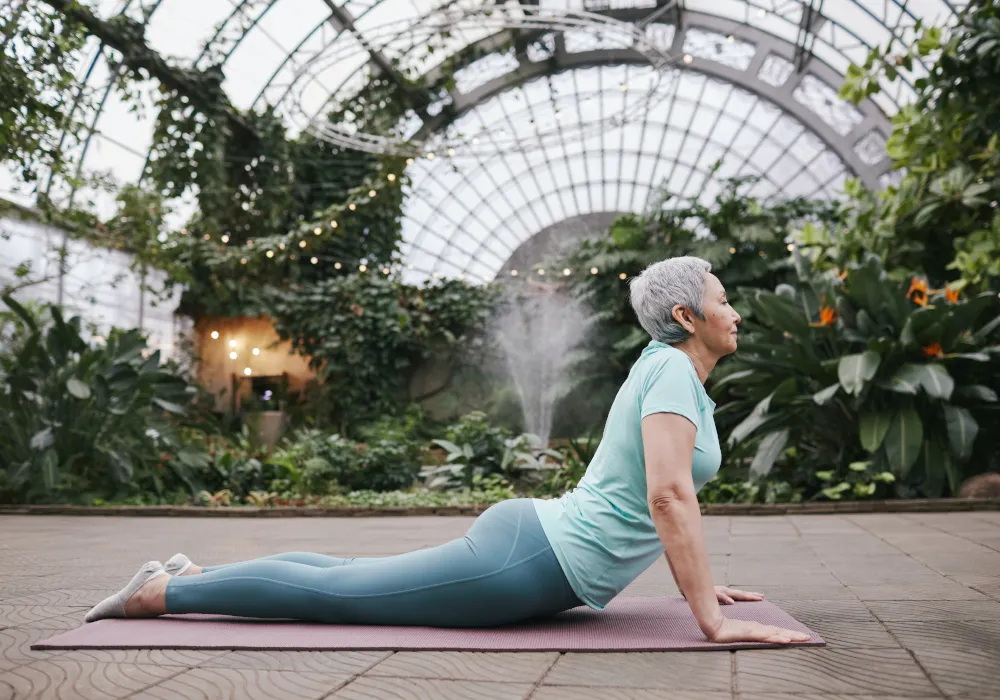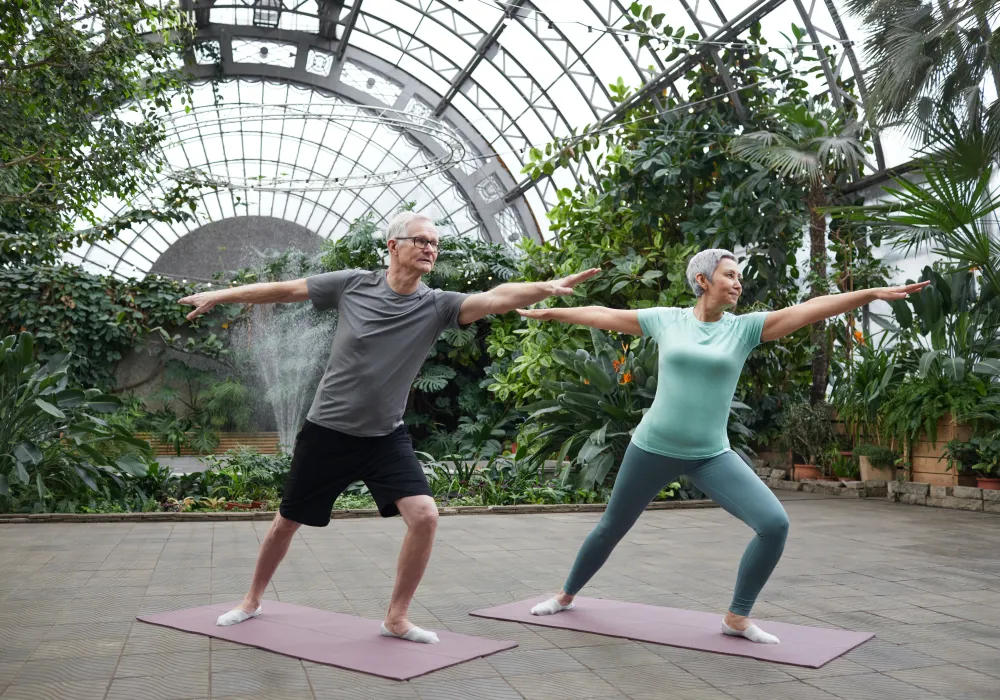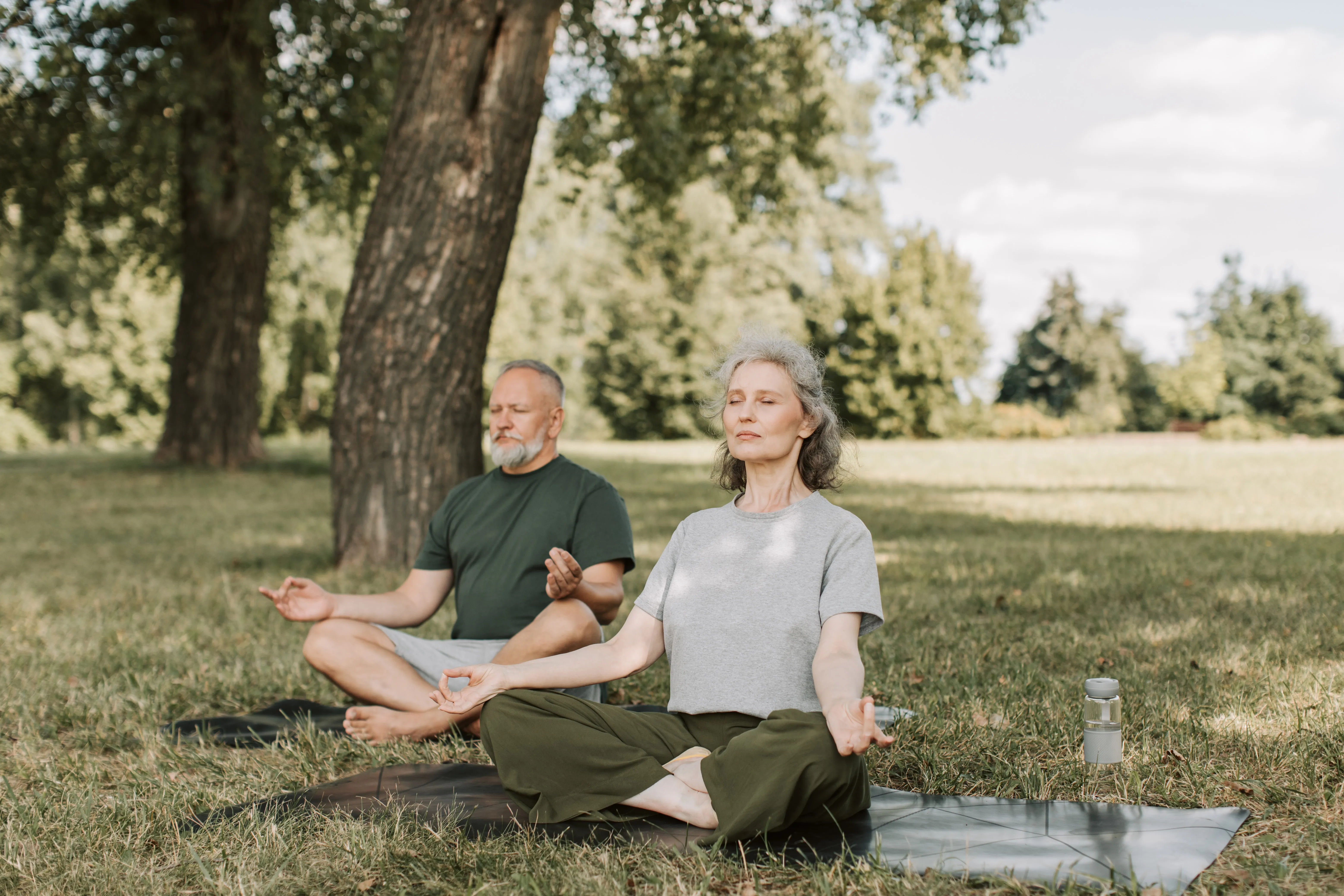Healthy Aging with Yoga, Science or Hype?

Yoga has been around for a long time and is considered one of the oldest forms of self-care originating in India in the Indus valley. It was first simply sitting and controlling breath allowing the practitioner to drop into a blissful meditative state. In later years, English calisthenics was added to incorporate exercise and movement to tone and train the body. Yoga began adhering to movement coordinated with breath to calm the body as well as relieve tension from the mind. The modern practice of yoga is often referred to as a moving meditation as you are exercising and allowing the mind to reach a restful state through coordinated purposeful breathing. Yoga along with a healthy plant-based diet has been the standard Ayurvedic approach to preventing disease and healthy aging. There are many claims regarding how yoga can help us as we age but are they backed by science? Recently there have been more science-based studies with data backing the claims that yoga positively affects cellular aging, balance, mental health and mobility, and maybe most importantly cognitive decline. Yoga is being looked at to lower medical costs and improve outcomes as we age. There are many ways to participate in yoga, from slower stretching-based gentle yoga, chair yoga, and restorative yoga to faster more athletic vinyasa flow and rigorous focused ashtanga yoga. All have benefits listed below but some focus more on physical strength while others are about stretching, breath work, or mental focus and meditation. Yoga has become mainstream and is being recommended for troops by the U.S. Armed Forces as a method of treating PTSD. Most modern-day yoga does not focus on any type of spiritual practice unless you seek out that type of yoga and therefore is welcoming to people of all spiritual beliefs and religions.
Neurological Benefits of Yoga
A study of yoga practitioners showed that regular practice was positively correlated with anatomical changes in the brain. Specifically, the prefrontal cortex, hippocampus, and cingulate cortex are all areas associated with age-related cognitive decline. These studies have been repeated and the results corroborated showing both short-term and long-term positive neurological impacts.
Physical Mobility, Balance, and Strength:

Yoga has been correlated with increased physical mobility and independence among seniors. A large multi-country study of sedentary seniors showed that the average senior is sedentary for 9.4 hours per day. This increases one’s risk for premature aging. One of the best ways to break out of the sedentary rut and start moving is through yoga. One study looked at seniors attending a 20-week yoga program and found their spine mobility had increased along with greater muscle flexibility and range of motion. Also impacted positively were back, abdominal, and oblique muscle strength. Improving strength helps seniors maintain balance as well as lessen serious injuries from falls. Also, establishing a movement routine will help reduce the number of hours spent sitting. Balance and strength are the focus of many yoga programs and as you build your strength you will notice improvements in balance. The core is an overlooked key to balance and yoga poses are great for promoting core strength resulting in improved balance and posture.
Mental Health Anxiety and Depression
Patients who practiced yoga have shown a significant reduction in the Trait anxiety score. Ninety minutes of yoga one to two times per week for a month showed significant reductions in anxiety as well as depression. Deep, mindful breathing, a skill learned and practiced in yoga class is a tool that can be used throughout the day to manage symptoms. Breathing can help the neurological system move out of the fight or flight sympathetic nervous system into the rest and digest or parasympathetic nervous system. A regular practice focusing on mindful breathing is even being recommended to patients by their doctors to help with anxiety, depression, and high blood pressure.

Slower Brain Aging
Long-term yoga practice has been connected to improved connectivity between the prefrontal and posterior cortex of the brain. This network of interconnecting neurons transfers data related to working memory, spatial attention, and decision-making. Older women in the study who had been practicing yoga for at least eight years showed better functional brain connectivity compared to the younger control group. A group that participated in a 90-day yoga and meditation retreat showed reductions in markers in the brain related to inflammation and premature aging. It does not matter that you waited so long to start, starting at any age is shown to have a positive impact on the brain and healthy aging.
Reduced Oxidative Stress and Cellular Aging
In a 12-week study incorporating classical yoga postures, breathwork and mindfulness were positively associated with cellular biomarkers of aging. Less DNA damage, oxidative stress markers, and shortened telomeres. Telomeres are little protective caps on the end of our DNA molecules and play a vital role in protecting the integrity of our DNA. Once the telomeres get too short the cell will cease to function and die. This is cellular aging and happens to us all however is accelerated by certain lifestyle choices such as smoking, UV light exposure, chronic stress, poor diet, sedentary lifestyle, and obesity.
The bottom line is that yoga has been looked at scientifically by many in recent years, and the benefits our undeniable, especially for seniors. It is a great way to add movement to your routine and turns out can help you age more healthfully right down to your very DNA.
As with any exercise program, always check with your doctor or trusted healthcare provider before undertaking any new program.